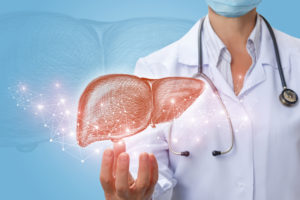One of the most important jobs for every parent is to make sure they give their children a healthy start in life. A big part of that includes making sure they receive their daily recommended vitamin intake. Many automatically assume this includes providing them with a chewable or gummy vitamin each day, but is this really necessary?
The answer is not necessarily. Most experts agree that children should get their vitamins from a healthy diet that includes dairy products like milk, cheese and yogurt; fresh fruits and green leafy vegetables; proteins, such as meat, chicken, fish, and eggs; and a variety of whole grains.
However, given the busy lifestyles of most families, providing well-balanced meals isn’t always a realistic option. In these instances, because children may not be getting their vitamins through their daily diet, supplements should be considered . Other potential reasons to supplement your child’s diet with vitamins include:
- If your child is a fussy eater
- If your child has a delay in his or her physical development
- If your child is living with a chronic medical condition such as asthma
- If your child has digestive problems or food allergies
- If you are raising your child as a vegetarian or vegan
- If your child eats a lot of fast food or processed food or drinks a lot of soda
If you believe that vitamins are necessary for your child’s development, it is important to make sure they are receiving the right ones. The following vitamins are considered most critical for growing children.
- Vitamin A– Promotes normal growth and development; tissue and bone repair; and healthy skin, eyes, and immune responses.
- Vitamin B – The family of B Vitamins, including B2, B3, B6 and B12 aid metabolism and energy production. They also promote bone and tooth formation and development of healthy muscles and connective tissue.
- Calcium – Essential for helping build strong bones as a child grows.
- Iron – Builds muscle and is essential to healthy red blood cells. Iron deficiency is a risk in adolescence, especially for girls once they begin to menstruate.
If you do give vitamins to your children, follow these safety tips:
- Put vitamins away, well out of reach of children, so they don’t treat them like candy.
- Be sure not to exceed the daily recommended dosage as too many vitamins can be dangerous
- If your child is taking any medication, be sure to ask your child’s doctor about any drug interactions with certain vitamins or minerals.
- Try a chewable vitamin if your child won’t take a pill or liquid supplement.
- Consider waiting until a child reaches age 4 to start giving a multivitamin supplement, unless your child’s doctor suggests otherwise.
There are many over-the-counter pediatric vitamins on the market today. Before you make a decision on which to buy for your child, consult with your pediatrician. They can advise you on what makes the most sense for your child.
To make an appointment at xx Hospital’s Pediatric Ambulatory Care Center, please call 718-670-5486.
All content of this newsletter is intended for general information purposes only and is not intended or implied to be a substitute for professional medical advice, diagnosis or treatment. Please consult a medical professional before adopting any of the suggestions on this page. You must never disregard professional medical advice or delay seeking medical treatment based upon any content of this newsletter. PROMPTLY CONSULT YOUR PHYSICIAN OR CALL 911 IF YOU BELIEVE YOU HAVE A MEDICAL EMERGENCY.






